By Jim Campbell, ANN CEO/Editor-in-Chief/Test Pilot (Arrogant, Over-Opinionated Know-It-All/Test Dummy)
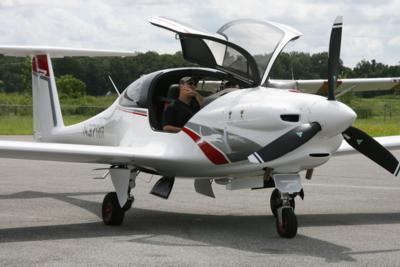
ANN E-I-C Note: OK… serious apologies for dragging this out… but things are crazy here… we’ve hired some new people, we’re training aggressively. we have a stunning number of new clients, and business is… well, busy. I’ve been editing parts Four and Five and already have the final edit of Part Six underway. We take these reports VERY seriously… and based on some of the drivel I see (especially on YouTube) that tries to pass itself off as a so-called flight report or evaluation, we may be one of the few left, who do. So… without further delay, let’s get on with Part Three…
Each seat adjusts easily, A small ball connected to a cable, close up and under the seat, acts as a seat release and then you shift your gluteus maximus (and some of ours are more maximus than others) until you have the proper positioning. At 5 foot 10 inches and 230 pounds, I only needed a notch to get solid access to the rudder pedals, and may ultimately have settled on another one (forward) now that I think of it. A quick shift fore and aft will allow you to ascertain that the seat’s locking mechanism has seated itself and that you’re thereafter unlucky to find yourself sliding anytime in the future.
The shoulder seat belting system is conventional… but what becomes really evident right from the start is that the Panthera cabin feels FAT—at least far more than one might first expect from the sleek exterior appearance. With Andy and I (who is not as skinny as I once was) both aboard, we didn’t rub shoulders, elbows, hips or any other illicit body parts… it’s THAT wide.
Sitting down, though, produced the first non-subjective ‘negative’ I experienced with the Panthera… the minimally sloped nose and the laid back front canopy does limit forward visibility a bit… not as bad as a Sukhoi, but it’s no 182, either. Peripheral forward visibility does improve from the generous taper across the lateral aspect of the cowl but looking straight ahead for taxi and climb operations were obviously going to require a little extra attention to avoid conflicts with airplanes, obstacles and UFOs.
Closing airplane doors is proof positive that too many aircraft designers don’t pay attention to ‘the little things.”
But…
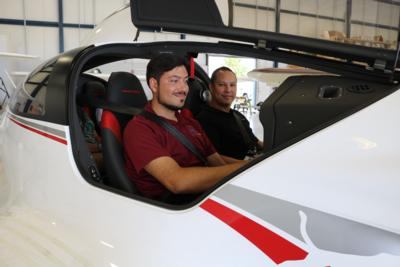
Whoever designed the door mechanism latching hardware and processes on this thing deserves serious kudos… it’s simple, and qualifies for my favorite aero-acronym for when things are done right… ‘JPW’ which stands for… it JUST PLANE WORKS, and it does so REALLY well for those of us who want to keep the twisting, turning, grunting and groaning to a minimum (yes, Cirrus, you know who you are…).
The door latches with a single tapered fore and aft pin just under the window frame. You access those pins via a single marvelous D-shaped handle that gives you plenty of moment arm against the forces of resistance from the pins trying to seat on either side of the door. Both pins are visible from the adjacent seat as they slide into place and the large D-handle makes short and easy work of a process that is far more difficult on many other airplanes. Better yet, if traveling with an aeronautically ignorant passenger, it will be far easier to show them what to do, make sure they did it right, or even to reach across and do it for them when required… though it is (again) a surprisingly WIDE cabin and you may have to loosen your belts to make it all the way.
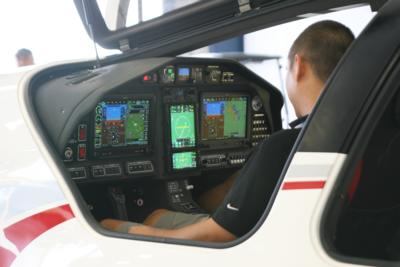
When you’re sure you’re ready for liftoff, the handle recesses flat and unobtrusively against the side of the door frame—quite out of sight, mind and doesn’t stick in your side, if you happen to be a little on the wider side of body types (hey, my wife is a GREAT cook… sue me). It may not sound like that big of a deal… but I’ve flown a LOT of different airplanes… and the majority of door closing/latching systems leave a lot to be desired. The Panthera is not the best I’ve ever seen, but it is pretty darned good.
On the overhead panel between the front seats is the “Jesus Handle.”
If you think you are about meet Jesus for real, this is the handle you need to pull… because Pipistrel, like SR-20/SR-22 Visionary Alan Klapmeier’s, original idea for the Cirrus, has installed a chute in each Panthera airplane… though this system is not the well-known BRS we are somewhat used to here in the States. The operating specs for the installed system are impressive. The chute is designed for operation at a max speed of 195 KTAS at 1200 kg, or a max speed of 175 KTAS at 1315 kg.
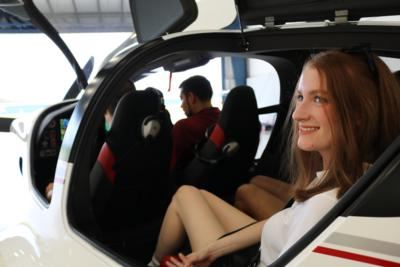
Regular readers will recall that I am more than an adherent of emergency chute technology in our airplanes… especially since I was one of the test pilots that participated in both Handbury and BRS test deployments several decades ago and the results of those tests, even in the infancy of the technology, have made me more than a firm believer, and something of an evangelist for the concept. One of the other reasons for that, is that after participating in flight tests in these programs, I later had the chance to use a VERY-OLD and outdated BRS mortar fired emergency chute after a pitch control failure (jammed elevator—in a pitch negative inclination) in a light aerobatic aircraft. It was NOT a good moment (and nearly caused a bonified laundry emergency)… Watching that chute ‘woof’ into full inflation, rapidly, was even more thrilling as the trick a certain redheaded High School Senior showed me in my Junior year.
(Pardon me… enjoying a memory… OK, enough of that… back to the story).
The speed parameters for the rocket-fired chute system appear generous, but I do have modest concerns about service and support for the chute system by a manufacturer so far across the pond. While such issues have been rare for US systems, when problems do arise, its been nice to have a US source of support. I bring this up only because virtually all other aspects/components of the aircraft have US sources and/or local knowledge for applicable service and support.
Up front, the Panthera is pretty conventional… with a derated Lycoming IO-540 replacing the original IO-390 the aircraft was developed with. From the reports in the field, the IO-390 did well for the Panthera, but the factory wanted a powerplant that could handle auto-fuel (a major European concern due to outrageous av-gas pricing and eco concerns) and Lycoming wasn’t interested in going there with the 390. SO… the 260HP variant of the IO-540 was selected for the final version of the aircraft – which benefitted nicely from the extra oomph in the climb and speed department -- but may have still have some issues to deal with in terms of dealing with the heat created by a bigger, more powerful mill under the hood. The three-blade prop has MT-Propeller parentage, while engine/prop/mixture controls are a conventional mix installed in a center console between both pilot positions, with the power lever given special attention with a large and wide T-Handle appendage.
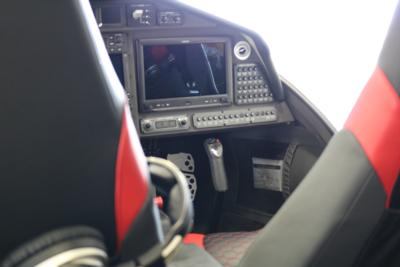
This current edition of the Panthera uses a Garmin G3X flat panel system, fed by a dual combo of a Garmin GTN 750 Xi, and a GTN 650 Xi, along with the usual assortment of Garmin audio panel and transponder systems that is brought to life with the flip of a switch/Avionics Master, though I understand that they have also used Dynon systems in the past. A Garmin GMC 307 2-axis GPS-slaved digital autopilot completes the ‘Garminization’ of the aircraft. I was pleased to see one of my favorite backup systems, the Mid-Continent Instruments SAM Backup Airspeed, Backup Altimeter, Backup Artificial Horizon installed in case the Garmin system gives up the ghost. Last, but not least, an Artex ELT 345 (406 MHz) provides the final safety net.
Prior to start, the Panthera offers a fairly powerful parking brake, so you can set it, and dedicate most of your attention and efforts to starting chores. The main wheel brakes are set for parking through the use of a lever on the central pedestal. To operate, the lever is pulled up while you are applying positive brake pressure and ‘lock’ the brakes. To release them, flip the parking brake lever down and the system is restored to normal operation.
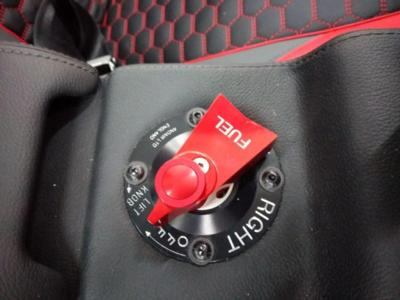
Start procedures are conventional for a big Lycoming Fuel-Injected engine, and once started, the engine mount provides a pretty smooth foundation for the derated Lyc’s 260 ponies. Since this Panthera was not equipped with extra tankage, the very accessible fuel tank selector/cutoff, also mounted between the seats and aft of the power pedestal, pretty much only allows the selection of the two main tanks or acting as a fuel cutoff.
NEXT: Part Four… Time to fly! We start up, do a little taxiing and commit aviation fearlessly, as we start initial stability and control investigations, do some initial performance tests and get to know the Panthera in its natural element. And make no mistake about it, the Panthera loves to fly. For the record, Part Four and Five will cover the airborne flight testing protocols and procedures used to evaluate this beast, while we will finish it all up in Part Six with Final Remarks… AND, our all-important and painfully critical Flight Test Report Card.
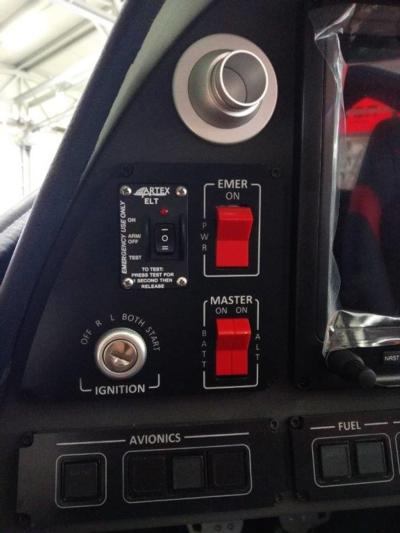
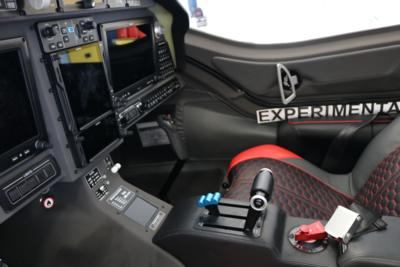
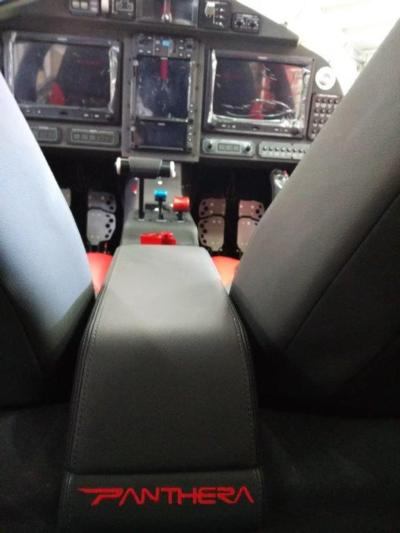
 ANN's Daily Aero-Linx (04.16.24)
ANN's Daily Aero-Linx (04.16.24) Aero-News: Quote of the Day (04.16.24)
Aero-News: Quote of the Day (04.16.24) Airborne 04.10.24: SnF24!, A50 Heritage Reveal, HeliCycle!, Montaer MC-01
Airborne 04.10.24: SnF24!, A50 Heritage Reveal, HeliCycle!, Montaer MC-01 Airborne 04.12.24: SnF24!, G100UL Is Here, Holy Micro, Plane Tags
Airborne 04.12.24: SnF24!, G100UL Is Here, Holy Micro, Plane Tags Airborne-Flight Training 04.17.24: Feds Need Controllers, Spirit Delay, Redbird
Airborne-Flight Training 04.17.24: Feds Need Controllers, Spirit Delay, Redbird











